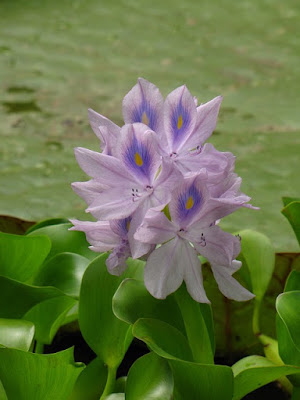Posted by Chester Morton / Sunday, 14 May 2023 / No comments
What are the effects of aquatic invasive alien species on fishery habitats, fishery organisms and fishermen/women.
WHAT ARE THE EFFECTS OF AQUATIC INVASIVE ALIEN SPECIES ON FISHERY HABITATS, FISHERY ORGANISMS AND FISHERMEN/WOMEN?
Introduction
Plants
that are considered non-native to an environment are referred to as alien
invasive species. These alien invasive species may either have been introduced
to the new environment deliberately or just by accident. They are capable of
causing great harm to their new habitat. Some examples of alien invasive species
(AIS) that are common in water or fish habitat include but is not limited to water
hyacinth, water lettuce, hornwort, papyrus reed etc. Aquatic invasive alien
species (AIS) is a major threat to aquatic ecosystems, fisheries habitats, and fishery
organisms. This article discusses how alien invasive species negatively impacts
fish habitats, fishery organisms and the fisheries industry.
Effects
of alien invasive species (AIS) on fish habitat
One
of the greatest problems associated with the fisheries industry has to do with
alien invasive species. The presence of these invasive species in water bodies
can have very negative effect on fish habitats. One of the reasons why they are
a problem is that because of their invasive nature, they compete with other native
species. For example, they share the available food in the space and their habitats
with the native species. Another danger that the alien invasive species pose is
that of negatively impacting the quality of water in the habitat. Also, they
may introduce and spread diseases into the space. Distortion of the food chain
in the habitat is another negative impact on the ecosystem. Some alien invasive
species can even cause native species to disappear from the system.
Effects
of alien invasive species (AIS) on Fisheries organisms
Another
aspect of the fishery’s industry affected by alien invasive species are fisheries
organisms. Some of the fisheries organism affected include fish, shellfish, and
other aquatic species. For instance, alien invasive species compete for food
with the native plants and even the space within the habitat. They can disturb native
ecosystems. It is not uncommon for alien invasive species to even introduce to
their new abode. Again, alien invasive species can cause damage fish habitats and
thereby causing harm to fisheries organisms. For example, as water hyacinth
covers the surface of the water, it prevents the Sun from directly hitting the
water.
Effects
of alien invasive species (AIS) on Fishermen
Invasive alien species can have a very negative
impact on fisherfolks. The reason being that, as mentioned earlier, their
presence in an ecosystem can lead to a reduction in the number of fish native
to the area so that fishermen would now catch less fish than before. This will
subsequently affect catches and reduce their income. Invasive alien species can
also change the turbidity and temperature of the water to a point where the
fish would have to adapt other habits to survive. This will cause fishermen to change
their fishing strategies. Finally, as the invasive species colonize the new
environment, they introduce new diseases which can negatively affect the fish
population and further reduce fish numbers, which then reduce their catch and
reduce their economic fortunes.
Conclusion
Overall,
the analysis of the effects of aquatic invasive alien species on fishery
habitats, fishery organisms and fishers has revealed that these species can
have a significant and devastating impact on the environment and local
communities. With the introduction of new species and the spread of existing
species, the threats posed to the aquatic environment are increasing. It is
therefore essential that governments and other organizations take effective
measures to reduce and prevent the spread of aquatic invasive alien species and
their effects. Only by taking such measures can we ensure the protection of our
habitats and the future of our fisheries.


